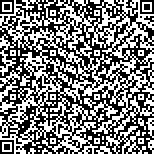|
| 引用本文: | 侯京明,王培涛,赵联大.从2011 海啸演习看中国海啸危害[J].海洋科学,2013,37(12):84-89. |
| |
|
| |
|
|
| 本文已被:浏览 1763次 下载 2163次 |

码上扫一扫! |
|
|
| 从2011 海啸演习看中国海啸危害 |
|
侯京明1, 王培涛1, 赵联大1
|
|
国家海洋环境预报中心
|
|
| 摘要: |
| 2011 年11 月, 联合国教科文组织政府间海洋学委员会(IOC/UNESCO)发起了代号为“Exercise Pacific Wave 11”的跨国海啸演习, 演习区域为整个太平洋海区。中国应邀参加了本次演习, 演习在我国海域地震带上假设了两个震源, 分别位于琉球海沟和马尼拉海沟。为了评估这两个潜在海啸对我国的影响, 本文采用数值模拟的方式, 对其进行了计算。计算结果表明: 这两处震源所引发的海啸均能对我国造成灾害性影响, 受影响严重的省市有江苏、上海、浙江、福建、广东和海南等; 从传播时间图上看, 若发生大海啸, 海啸波将在5 h 内, 陆续影响沿海各省市; 相比琉球海沟, 马尼拉海沟震源产生的海啸会更快到达我国沿岸。 |
| 关键词: 海啸 演习 数值模拟 |
| DOI: |
| 分类号: |
| 基金项目:国家海洋局海洋公益性项目(201205034-02) |
|
| Characterization of tsunami disaster in China from Exercise Pacific Wave 11 |
|
|
| Abstract: |
| Exercise Pacific Wave 11 organized by IOC/UNESCO was conducted in November 2011. The drill area included the whole Pacific area and China took part in this tsunami drill. Two earthquake focuses were assumed to be in China sea area, which lied in Ryukyu Trench and Manila Trench respectively. The COMCOT (Cornell Multi-grid Coupled Tsunami) model developed by Cornell University and the CTTT (China Tsunami Travel Time)model developed by National Marine Environmental Forecasting Center were used to evaluate the influence of the two potential tsunamis on our country. The results showed that these two tsunamis could cause great disaster in China. The cities which might be seriously affected included Jiangsu, Shanghai, Zhejiang, Fujian, Guangdong and Hainan. According to the figure of travel time, if tsunami happens, it could reach China coastal area in 5 hours. The tsunami from Manila Trench travels faster than the one from Ryukyu Trench. |
| Key words: tsunami drill numerical simulation |
|
|
|
|
|
|
